
The Moro Islamic Liberation Front is a group based in Mindanao seeking an autonomous region of the Moro people from the central government. The group has a presence in the Bangsamoro region of Mindanao, the Sulu Archipelago, Palawan, Basilan, and other neighbouring islands. The armed wing of the group was the Bangsamoro Islamic Armed Forces (BIAF), although the name of its parent organization, the MILF, was often used to refer to the BIAF. In July, 2018, the Philippine government passed the Bangsamoro Organic Law, giving more autonomy to Muslims. In return, MILF announced that it would disarm its 30,000 fighters.
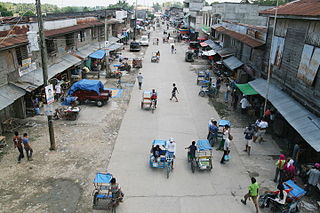
Datu Piang, officially the Municipality of Datu Piang, is a 2nd class municipality in the province of Maguindanao del Sur, Philippines. According to the 2020 census, it has a population of 28,380 people.

Shariff Aguak, officially the Municipality of Shariff Aguak, is a 3rd class municipality in the province of Maguindanao del Sur, Philippines. According to the 2020 census, it has a population of 33,982 people.

Mamasapano, officially the Municipality of Mamasapano, is a 5th class municipality in the province of Maguindanao del Sur, Philippines. According to the 2020 census, it has a population of 27,807 people.

Datu Saudi Ampatuan, officially the Municipality of Datu Saudi Ampatuan, is a 4th class municipality in the province of Maguindanao del Sur, Philippines. According to the 2020 census, it has a population of 31,060 people.

The Moro conflict was an insurgency in the Mindanao region of the Philippines, which involved multiple armed groups. Peace deals have been signed between the Philippine government and two major armed groups, the Moro National Liberation Front (MNLF) and the Moro Islamic Liberation Front (MILF), but other smaller armed groups continue to exist. In 2017, the peace council settled around 138 clan conflicts.
The legislative districts of Maguindanao were the representations of the province of Maguindanao and the independent component city of Cotabato in the various national legislatures of the Philippines. The province and the city were represented in the lower house of the Congress of the Philippines through their first and second congressional districts from 1987–2022.

Shariff Saydona Mustapha, officially the Municipality of Shariff Saydona Mustapha, is a municipality in the province of Maguindanao del Sur, Philippines. According to the 2020 census, it has a population of 25,080 people.

Ameril Umbra Kato was the founder of the Bangsamoro Islamic Freedom Fighters (BIFF), a group which seceded from the Moro Islamic Liberation Front (MILF). He joined the MILF in or around 1985, after he graduated from the esteemed Wahhabism School Imam Muhammad bin Saud Islamic University in Riyadh, Saudi Arabia. Umbra Kato was the Philippines' most wanted man, though due to his membership in MILF he was not hunted by the military. A warrant of arrest was filed against him alongside other BIFF members by the Philippine National Police. The Armed Forces of the Philippines, with the MILF, launched Operation Darkhorse in a bid to arrest him in January 2014.
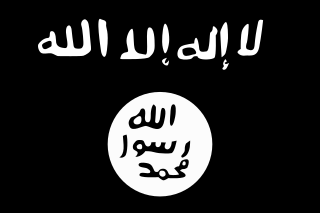
The Bangsamoro Islamic Freedom Fighters (BIFF), also known as the Bangsamoro Islamic Freedom Movement, is an Islamist militant organization based in Mindanao, the Philippines. It follows the Wahhabi ideology that is currently being spread by Wahhabi preachers in the country. It is a smaller player in the overall Moro insurgency in the Philippines and is mostly active in Maguindanao and other places in central Mindanao. It is a breakaway group from the Moro Islamic Liberation Front founded by Ameril Umbra Kato. Following Kato's death, the group split into three factions, one of which has aligned with the Islamic State of Iraq and the Levant (ISIL), while the other two are less radical.

The Mamasapano clash was a shootout that took place during a police operation by the Special Action Force (SAF) of the Philippine National Police (PNP) on January 25, 2015, in Tukanalipao, Mamasapano, then-undivided Maguindanao. The operation, codenamed Oplan Exodus, was intended to capture or kill wanted Malaysian terrorist and bomb-maker Zulkifli Abdhir and other Malaysian terrorists or high-ranking members of the Moro Islamic Liberation Front (MILF).

The 2000 Philippine campaign against the Moro Islamic Liberation Front was a military campaign conducted by the Armed Forces of the Philippines (AFP) against a Muslim secessionist group that took place during the presidency of Joseph Estrada in the Autonomous Region in Muslim Mindanao in the Philippines. The campaign was waged "to weaken the Moro Islamic Liberation Front's capability to undermine the territorial integrity of the Philippines and inflict harm on both government personnel and civilians".
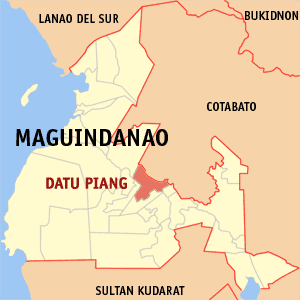
Operation Valiancy was the initial military operation of the 2000 Philippine campaign against the Moro Islamic Liberation Front which took place in Maguindanao, Philippines. The Philippine Army, primarily units of its 6th Infantry Division, assaulted Moro Islamic Liberation Front forces in the Talayan-Shariff Aguak-Datu Piang area of Maguindanao and captured Camp Omar ibn al-Khattab, its third largest camp located there. Camp Omar, named after Umar, a senior Sahabi of the Islamic prophet Muhammad, served as the headquarters of the 206th BIAF brigade under Ameril Umbra Kato and was defended by 500 guerillas. Camp Jabal Uhob, another MILF camp in the area, was also captured. Planned to be a week-long operation, Valiancy took only two days to realize its objectives.
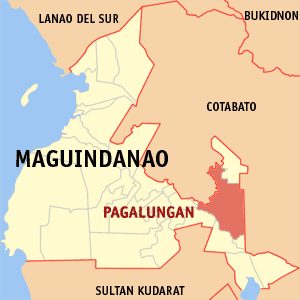
The Battle of the Buliok Complex took place on 11 February 2003 in an area within the provinces of Maguindanao and Cotabato in Mindanao, Philippines. The 60-hectare complex, which stretches from Pikit, Cotabato to Pagalungan, Maguindanao, was a stronghold of the Muslim separatist Moro Islamic Liberation Front (MILF). Accused by the Philippine government of harboring members of Pentagon, a notorious kidnap-for-ransom gang operating in Mindanao, the MILF was attacked in the Buliok complex by the Armed Forces of the Philippines under orders from then-President Gloria Macapagal Arroyo.

The siege of Marawi, also known as the Marawi crisis and the Battle of Marawi, was a five-month-long armed conflict in Marawi, Philippines, that started on May 23, 2017, between Philippine government security forces against militants affiliated with the Islamic State (IS), including the Maute and Abu Sayyaf Salafi jihadist groups. The battle also became the longest urban battle in the modern history of the Philippines.
This is a chronology of the Moro conflict, an ongoing armed conflict in the southern Philippines between jihadist groups such as the Abu Sayyaf Group, the Maute Group, Jemaah Islamiyah, and Islamic State affiliates, mainstream separatist groups such as the Moro Islamic Liberation Front (MILF), the Moro National Liberation Front (MNLF) and the Bangsamoro Islamic Freedom Fighters (BIFF), and the Philippine Government since 1971. Much of the fighting has been concentrated on the island of Mindanao and the Sulu archipelago, with spillover incidents and attacks occurring in the Philippine capital Manila and neighboring countries such as Malaysia.
Dickson Peñas Hermoso is a Filipino government official and former military official who serves as the head of the Ministry of Transportation and Communications of Bangsamoro. He was also known for being part of the Philippine Army's 6th Infantry Division which was involved in the Moro conflict.
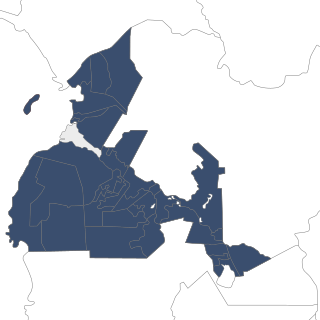
The Maguindanao division plebiscite was held in the province of Maguindanao, Philippines, on September 17, 2022, more than four months after the May 9 national and local elections, after having been postponed from its planned plebiscite in or before August 2021. As required by Republic Act No. 11550, it was conducted to seek the consent of the residents of Maguindanao on the proposal to divide the province into two separate provinces that will henceforth be named Maguindanao del Norte and Maguindanao del Sur.
On May 8, 2021, Bangsamoro Islamic Freedom Fighters insurgents occupied the public market of the municipality of Datu Paglas in Maguindanao, Philippines, forcing many residents to evacuate.
On November 8, 2022, the Philippine Army and the Moro Islamic Liberation Front (MILF) engaged in a gunfight in Ungkaya Pukan, Basilan, while the army was conducting clearing operations on "lawless elements" allegedly taking refuge in the territory controlled by the MILF. Fighting between the two sides continued until November 10, 2022 when a ceasefire between two sides were signed.














